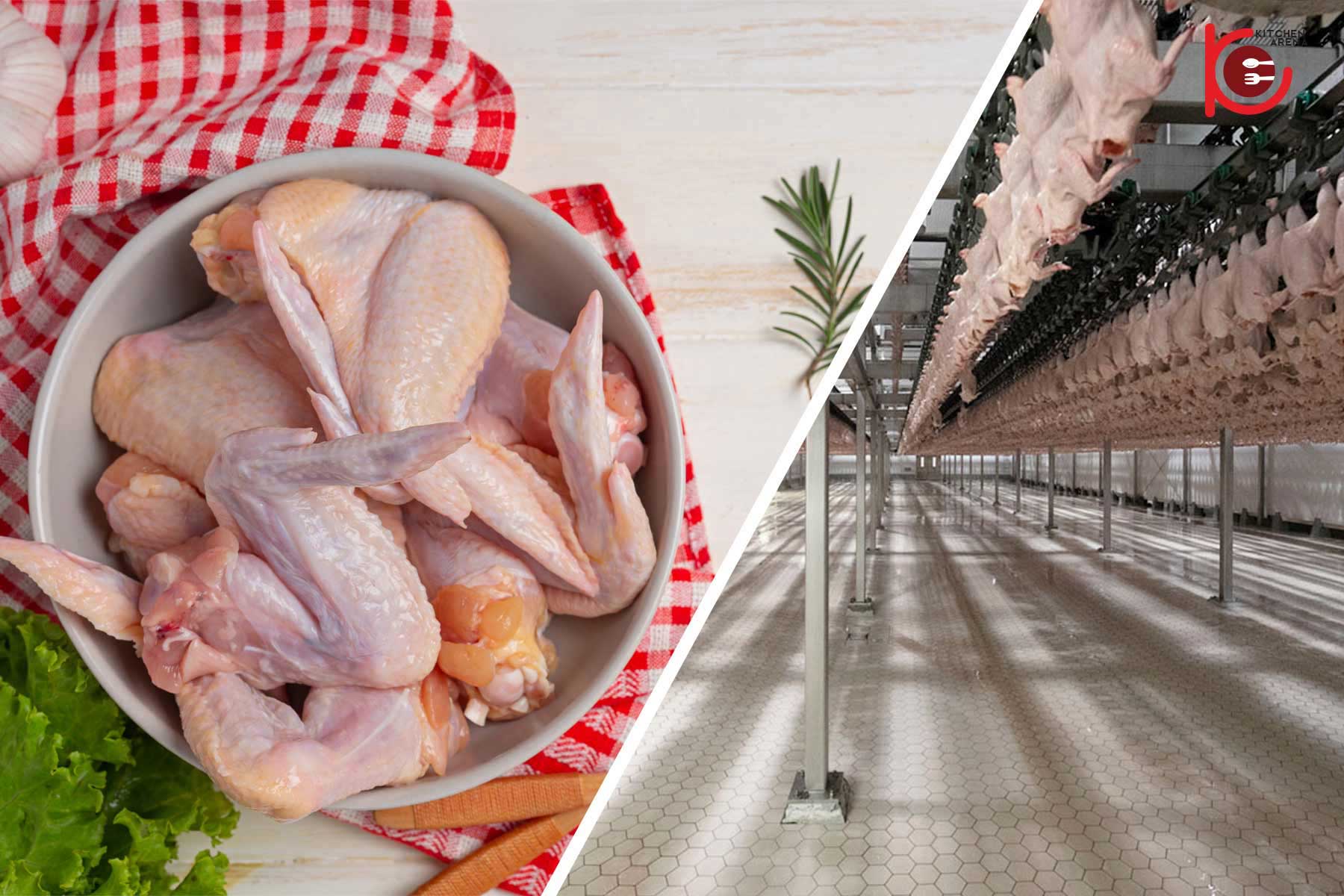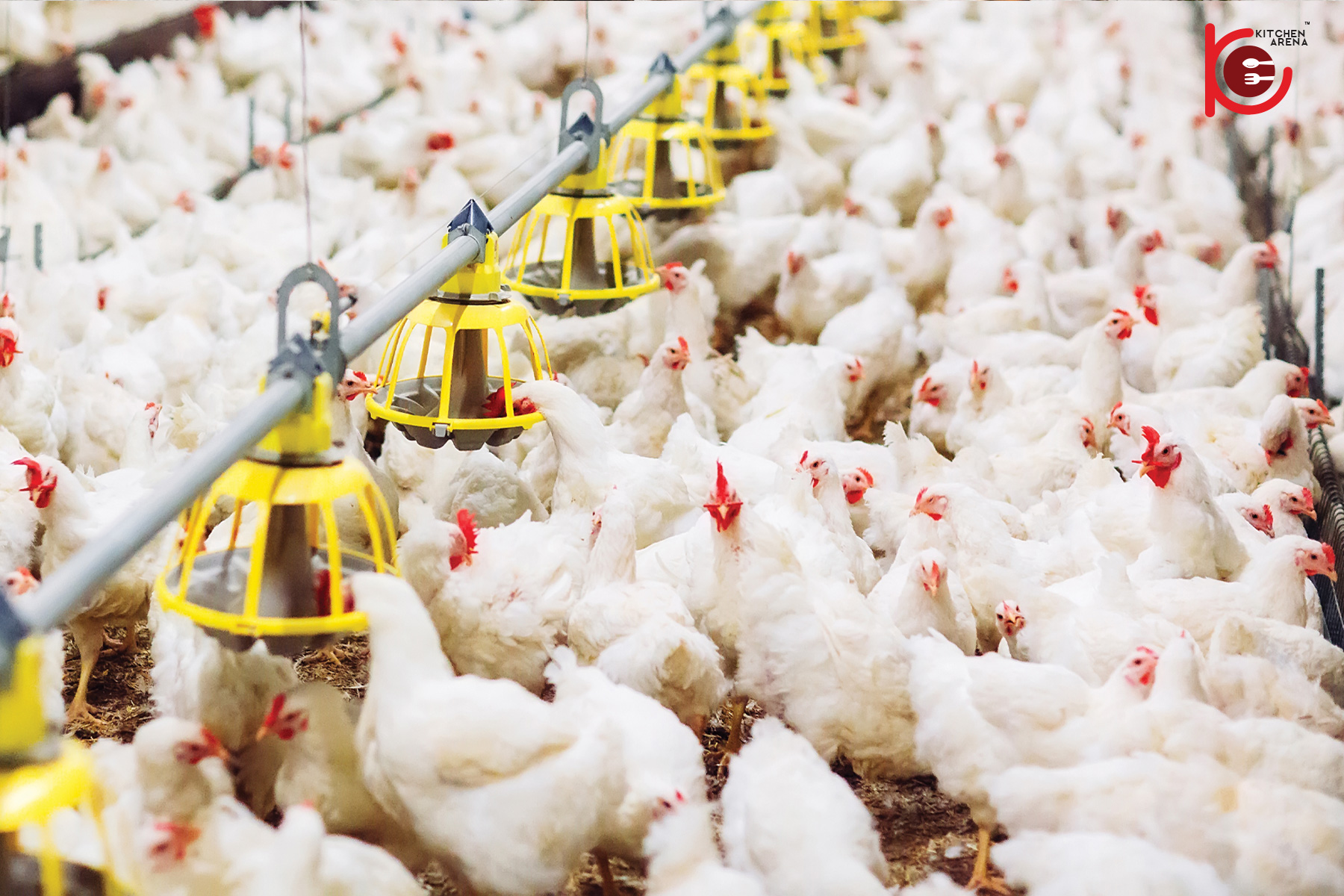In fresh chicken production, chickens must be quickly cooled (to chilled chicken) to temperature less than 40°F (4.4 ° C) within 4 hours after slaughtered. There are two methods of chilling – chilled chicken using water or cold air. Both method with final temperature usually about 28 to 30 °F (−2 to −1 °C), just above the freezing point for poultry. There are also chilling processes that using a combination of water and cold air.


About Chilling
Most processors use the water-chilling method. It is traditional method call for immersing freshly slaughtered chicken in a large chlorinated vat of ice water before being frozen. The meat is essentially waterlogged until it eventually purges much of the absorbed liquid into the package (that’s the liquid you find in the bottom of most commodity chicken trays). In these cases, the flavour of the meat is diluted and its texture compromised. USDA allows the water-immerse chickens to absorb up to 8% of its weight in water
On the other hand, invented in Europe and commonplace in Canada, air-chilling has just started to become popular in the United States. Air chilling is a processing method where chickens are cooled with purified cold air—these chickens simply taste better. They aren’t exposed to any chemicals, nor do they come into contact with treated water or solutions. No excess water is absorbed. Air-chilling as a crucial differentiator between good and great chicken. Air chilling maintains more of the integrity of flavour and texture of the natural chicken.
About Chilling
Most processors use the water-chilling method. It is traditional method call for immersing freshly slaughtered chicken in a large chlorinated vat of ice water before being frozen. The meat is essentially waterlogged until it eventually purges much of the absorbed liquid into the package (that’s the liquid you find in the bottom of most commodity chicken trays). In these cases, the flavour of the meat is diluted and its texture compromised. USDA allows the water-immerse chickens to absorb up to 8% of its weight in water
On the other hand, invented in Europe and commonplace in Canada, air-chilling has just started to become popular in the United States. Air chilling is a processing method where chickens are cooled with purified cold air—these chickens simply taste better. They aren’t exposed to any chemicals, nor do they come into contact with treated water or solutions. No excess water is absorbed. Air-chilling as a crucial differentiator between good and great chicken. Air chilling maintains more of the integrity of flavour and texture of the natural chicken.


Q&A
- Is frozen chicken less nutritious than fresh or chilled chicken?
- Poultry supplier flash-frozen chicken and fresh chicken have no difference in nutritional value. Properly packaged, frozen poultry products kept at 0°F ( −18 °C) should be good for up to 12 months. 20°F ( −6.7 °C) will be good for 3 months. If it’s home-frozen chicken, then it’s definitely less nutritious than fresh chicken.
- Does frozen chicken taste different?
- The unavoidable one is rancidity. In given time, it will oxidize the fat in meat, changing its taste and texture.
- Should I put chicken in the fridge or freezer?
- Packaged, raw chicken can be refrigerated for 48 hours after purchase. If it is not to be used in 48 hours, freezing is recommended.

